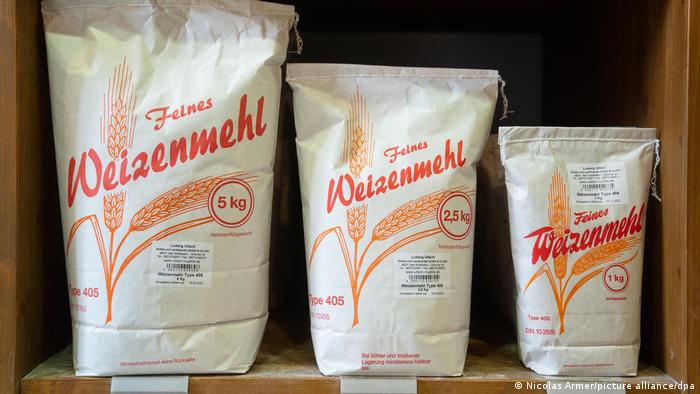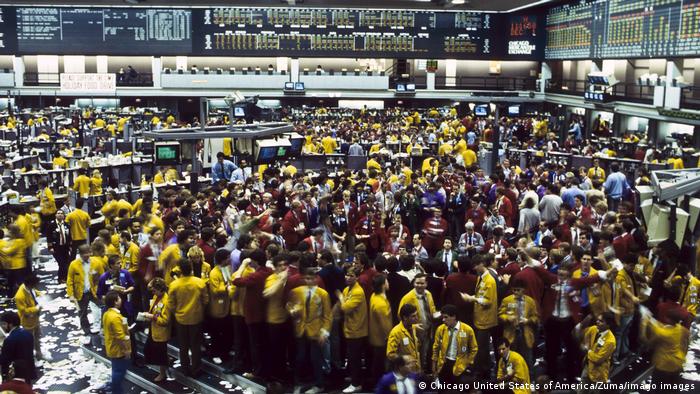Wheat Prices Soar — But Will The Costs Remain High?
Ukraine's next grain harvest is due within weeks, but with no sign of Russia ending the war, exports could be compromised
Until the end of February, few would have described the wheat trade as an exciting business. Global market prices for the commodity had been hovering around €200 ($312) a ton for many years. But with the war in Ukraine, this has changed fundamentally.
Russia's invasion of its neighbor has caused the commodity to jump to €400 per ton — a doubling that has come as a shock, especially for poorer countries whose citizens spend a significant amount of their disposable incomes on food.
Out of a total worldwide wheat harvest of 785 million tons annually, only about one quarter ends up sold as a commodity on the global market. Most of the wheat is consumed as part of people's daily diet in the countries where it is produced. Quality and prices can differ widely depending on the growing region.
![]()
Two global trading platforms
Although it is usually a local product, the price for wheat is decided on specialized global trading platforms, so-called commodities exchanges.
"There are two globally significant derivatives marketplaces for wheat in the world — the Chicago Board of Trade, CBOT, and Euronext in Paris," said Wolfgang Sabel from Kaack Terminhandel, a Cloppenburg-based financial services provider for trading in agricultural commodities.
"These exchanges are setting global benchmarks for prices under the regulatory authority of the state with the help of standardized rules and regulations. Only supply and demand determine the prices," he told DW.
Standardized measuring means that the amount and the quality of a commodity are strictly regulated. Wheat can be labeled, for example, as 50 tons of bread wheat grown in the EU, with a protein content of 11% and maximum moisture of 15%. Such standardization makes it possible to trade wheat all around the world.
For producers, traders and refiners of wheat, the prices set at the exchanges generally serve as wholesale prices that guide price-setting for downstream wheat products, said Sabel. But global market-based and local wheat prices can also differ, he added.
Insurance and speculation
Apart from stipulating global market prices, CBOT and Euronext also offer those involved in wheat trading the possibility of hedging their deals against the vagaries of market developments.
As an example, Sabel mentioned the purchasing policy of a wheat mill that is negotiating a contract with a supermarket chain for a larger number of one-pound (500 gram) packages of wheat flour for delivery in September. "You cannot know what the wheat price will be in September. But what you can do is buy a futures contract for wheat on the exchange."
Futures contracts are contracts traded at CBOT and Euronext to insure against unexpected price swings in the future. In the case of the wheat mill, it can now buy wheat futures for delivery in September to secure the current market price for its calculation for the contract with the supermarket chain.
Sabel also explained what will happen if the market price in September is actually higher than the €300 futures contract bought by the wheat mill. Should the price in September be, say, €400, the wheat mill initially pays the higher price to its supplier but at the same time receives a €100 payment from the issuer of the futures contract. In the end, the mill will have spent exactly the €300 per ton of wheat it based its calculation on. Futures contracts are available for purchases to be made up to two years into the future, Sabel added.
The global wheat crisis is already being felt by consumers as retail prices of flour are rising
A matter of calculation
Farmers also resort to futures contracts to insulate against price swings for their produce, said Sabel. For example, if a farmer issues a €300 contract for his wheat and the market price unexpectedly rises to €400, he can sell the wheat for €400 but must pay the difference of €100 to the holder of his futures contract.
The loss, however, turns into a profit in times of falling prices. Should the wheat price drop to €200 upon delivery, the holder of his €300 contract must pay him €100 into his financial account at the exchange.
So, the basis for all this financial maneuvering is real existing wheat, but the price-setting via the derivatives marketplaces is working largely without quantities of wheat actually being shipped around in the real world. "The exchanges are merely balancing out the different accounts without interfering physically in the wheat trade," said Sable.
Sabel, who is a futures broker himself, manages contracts for producers, traders, and refiners of wheat, but said you don't necessarily need a professional pedigree in any specific commodity trade to buy and sell at the exchanges. There are many speculators seeking to profit from the price swings, he added, as well as arbitrage traders who aim to exploit the small differences in prices between regions and marketplaces.
Founded in 1848, the CBOT originally traded only agricultural commodities. Now it offers options and futures contracts
Traders' paradise
At the moment, few experts would contest that the current surge in the wheat price to €400 is the result of the war between Russia and Ukraine. The two countries together produce about 60 million tons of the 200 million tons traded annually around the world.
"The world cannot do without the harvests from Ukraine and Russia. Their amounts are simply too big," said Sabel, noting that news from the frontline can influence prices as much as likely forecasts for the next grain harvest in the United States.
Exorbitant wheat prices, however, are always bad news for the developing world, especially for countries in Africa. "In these countries, people spend between 60% and 80% of their disposable income on food. If bread becomes double as expensive because wheat has surged from €200 to €400 per ton that has an impact," he said.
In Germany, bread prices have also risen substantially, and the German Farmers' Association expects them to remain elevated due to the ongoing war in Ukraine. In addition, the COVID-19 health crisis has triggered a series of supply problems.
"We are grappling with a severe shortage of fertilizers, and exorbitant prices for them," the organization's president, Joachim Rukwied, said recently. Also, disrupted supply chains have led to a scarcity of spare parts for agricultural machinery, which would make a swift increase in agricultural production "unrealistic," he added.
Commodities broker Wolfgang Sabel agrees, saying that at least until the end of next year "wheat will remain expensive."
This article was originally written in German.
Get the latest reports & analysis with people's perspective on Protests, movements & deep analytical videos, discussions of the current affairs in your Telegram app. Subscribe to NewsClick's Telegram channel & get Real-Time updates on stories, as they get published on our website.


























